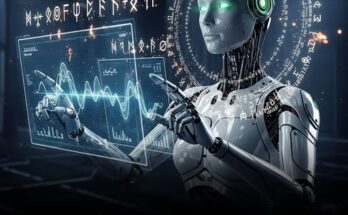In a groundbreaking announcement, Tesla CEO Elon Musk revealed that by 2026, Tesla owners will have the ability to add or remove their vehicles from the company’s Robotaxi fleet, functioning similarly to managing an Airbnb property. This initiative is part of Tesla’s broader strategy to revolutionize transportation through autonomous driving technology. The Robotaxi service is set to launch in Austin, Texas, in June 2025, initially utilizing Tesla-owned vehicles. Following this, the company plans to expand the service to allow individual Tesla owners to rent out their own vehicles by 2026.

The Robotaxi Concept: A Game-Changer for Mobility
Tesla’s Robotaxi fleet represents a transformative approach to transportation. The concept mirrors platforms like Airbnb, where owners can monetize their assets when not in personal use. In this case, Tesla owners can generate income by making their cars available for autonomous ride-hailing services during idle times. This model aligns with Musk’s vision of maximizing vehicle utility, reducing ownership costs, and providing an affordable alternative to traditional ride-hailing services like Uber and Lyft.
The introduction of the Robotaxi fleet is poised to disrupt the current transportation industry, offering an autonomous, cost-effective, and sustainable solution. With Tesla’s Full Self-Driving (FSD) technology progressing towards full autonomy, this concept could redefine urban mobility and the way people commute daily.
The Role of the Cybercab in Tesla’s Robotaxi Future
A key component of Tesla’s Robotaxi vision is the upcoming Cybercab. Unveiled in October 2024, the Cybercab is a two-seater autonomous vehicle designed explicitly for ride-hailing services. It lacks a steering wheel and pedals, emphasizing Tesla’s confidence in its self-driving capabilities. Production is scheduled to begin in 2026, with an expected price point below $30,000, making it an affordable option for mass deployment.
Tesla’s Cybercab is engineered with safety and efficiency in mind. Equipped with advanced AI, multiple cameras, and a robust sensor suite, the vehicle can navigate complex traffic environments without human intervention. The lack of a traditional driver’s seat allows for a more spacious and ergonomic passenger experience. By eliminating the need for human drivers, Tesla aims to significantly reduce ride-hailing costs, making Robotaxi services more accessible to a wider audience.
Financial and Economic Implications for Tesla Owners
For Tesla owners, the ability to integrate their vehicles into the Robotaxi network presents a unique financial opportunity. Owners can earn passive income by allowing their cars to operate in autonomous mode while they are not in use. This can help offset the cost of vehicle ownership, potentially making Tesla cars more financially viable for a larger demographic.
According to Musk, Tesla vehicles could generate significant revenue for their owners through the Robotaxi network. The revenue potential depends on factors such as usage frequency, pricing models, and regional demand. Tesla’s proprietary software will likely include dynamic pricing based on demand and supply, similar to existing ride-hailing platforms. This feature ensures that owners can maximize earnings during peak hours and high-demand periods.
Additionally, Tesla plans to implement a revenue-sharing model where a percentage of the earnings will be allocated to the company to maintain the Robotaxi infrastructure, provide software updates, and ensure overall system efficiency.
Regulatory Challenges and Safety Considerations
While the prospect of integrating personal vehicles into an autonomous fleet offers exciting opportunities, it also presents challenges. Regulatory approval remains a crucial hurdle. Many governments have yet to establish comprehensive legal frameworks for fully autonomous ride-hailing services. Tesla must work closely with regulators to address safety concerns, insurance policies, and liability issues associated with autonomous vehicles.
Safety is another critical factor in Tesla’s Robotaxi deployment. Although Tesla’s Full Self-Driving technology has made significant advancements, real-world testing and validation are necessary to ensure safe operations. Tesla will need to demonstrate that its autonomous fleet can handle complex traffic scenarios, unpredictable road conditions, and emergency situations effectively.
Moreover, Tesla must establish a robust framework for managing vehicle maintenance, software updates, and potential system malfunctions. Owners participating in the Robotaxi network may be required to adhere to maintenance schedules and software updates to ensure optimal performance and safety.
Impact on the Transportation Industry
Tesla’s Robotaxi initiative could have far-reaching effects on the transportation industry. Traditional ride-hailing services like Uber and Lyft may face significant disruption as autonomous fleets eliminate the need for human drivers, reducing operational costs and increasing efficiency. Lower ride-hailing costs could attract a larger user base, further accelerating the adoption of autonomous mobility solutions.
Public transportation systems may also experience shifts in ridership patterns. If Robotaxi services offer a more convenient and cost-effective alternative, urban commuters might opt for Tesla’s autonomous fleet over buses or trains. This shift could prompt city planners to rethink transportation infrastructure and invest in autonomous-friendly urban designs.
Additionally, the widespread adoption of autonomous ride-hailing services could impact car ownership trends. If Robotaxi networks provide affordable and on-demand mobility solutions, fewer people may feel the need to own personal vehicles. This could lead to a decline in traditional car sales while increasing demand for purpose-built autonomous vehicles like the Cybercab.
Technological Advancements Driving Tesla’s Robotaxi Vision
Tesla’s Robotaxi initiative is heavily reliant on advancements in artificial intelligence (AI) and autonomous driving technology. Tesla’s Full Self-Driving (FSD) system utilizes neural networks, real-time data processing, and over-the-air updates to improve vehicle autonomy continuously.
Key technological components driving Tesla’s Robotaxi vision include:
- Neural Network AI: Tesla’s AI system processes vast amounts of real-world driving data to enhance decision-making capabilities. This self-learning approach allows Tesla vehicles to improve their driving performance over time.
- Sensor Fusion: Tesla’s vehicles incorporate a combination of cameras, radar, ultrasonic sensors, and LiDAR alternatives to detect and respond to their surroundings. This multi-sensor approach ensures accurate object recognition and obstacle avoidance.
- Fleet Learning: Tesla’s autonomous system benefits from a vast network of connected vehicles. Data collected from Tesla’s global fleet helps refine the self-driving algorithms, making the system more robust and reliable.
- Over-the-Air (OTA) Updates: Tesla’s software updates enable continuous improvements in autonomous capabilities without requiring physical modifications to the vehicle. This allows Tesla to enhance safety, efficiency, and user experience seamlessly.
Consumer Adoption and Market Reception
Consumer acceptance of fully autonomous ride-hailing services will play a crucial role in the success of Tesla’s Robotaxi initiative. While many enthusiasts embrace the idea of self-driving cars, concerns over safety, reliability, and ethical considerations remain prevalent.
Public trust in autonomous vehicles will depend on Tesla’s ability to demonstrate consistent safety records, transparent data sharing, and effective problem resolution. Educational campaigns and real-world demonstrations could help bridge the gap between skepticism and adoption.
Additionally, Tesla must address accessibility concerns. While the Cybercab offers a futuristic transportation solution, accommodating individuals with disabilities, elderly passengers, and those unfamiliar with technology will be essential for widespread adoption.
Conclusion: The Future of Autonomous Mobility
Tesla’s Robotaxi initiative marks a significant milestone in the evolution of autonomous mobility. By allowing Tesla owners to integrate their personal vehicles into an autonomous fleet, Tesla is pioneering a new era of shared, self-driving transportation.
With the launch of the Cybercab, advancements in Full Self-Driving technology, and a vision for affordable and efficient ride-hailing services, Tesla is well-positioned to redefine the transportation landscape. However, overcoming regulatory challenges, ensuring safety, and securing consumer trust will be crucial to the success of the Robotaxi model.
As Tesla continues to push the boundaries of innovation, the integration of personal vehicle ownership with shared autonomous services could pave the way for a future where self-driving cars dominate urban mobility. Whether the world is ready for this transformation remains to be seen, but Tesla’s bold vision is undoubtedly shaping the future of transportation.


